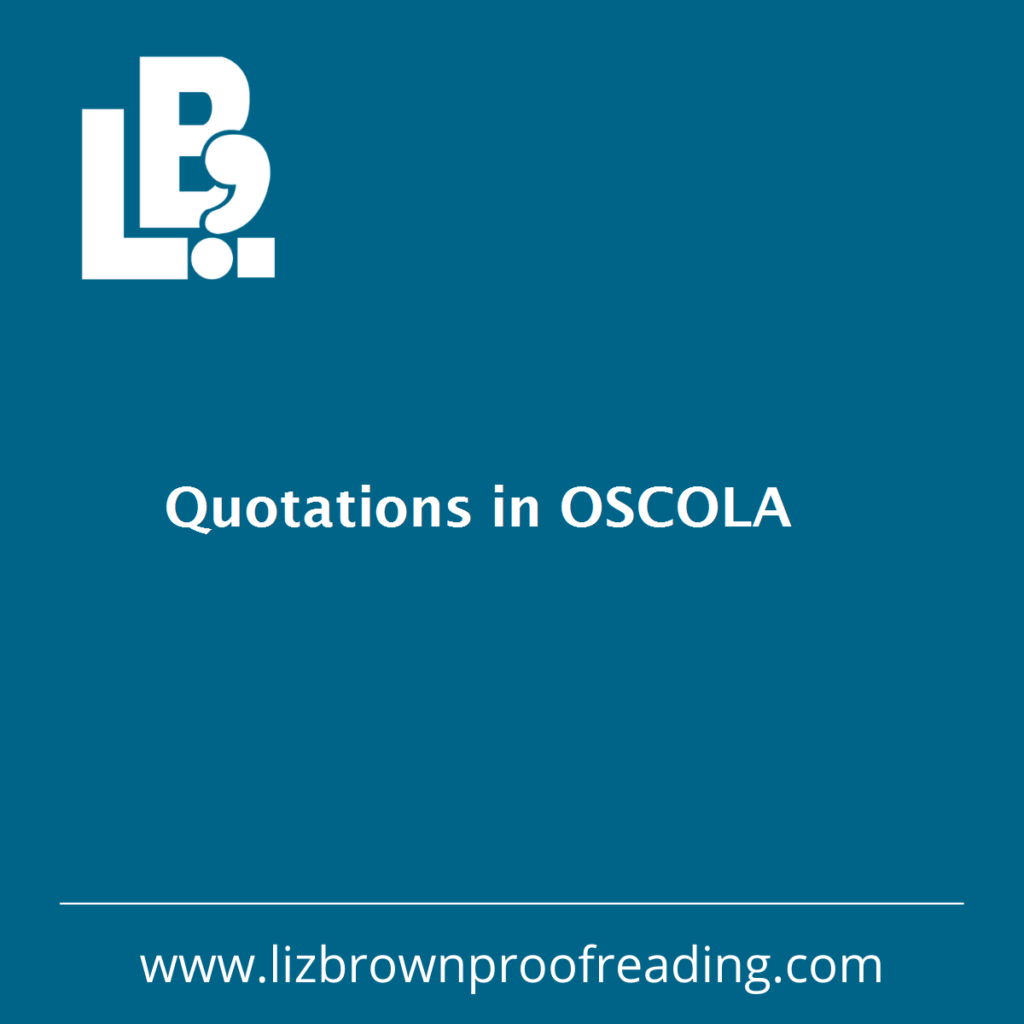Good academic writing is enhanced with relevant quotations from the sources you have consulted during your research, or sometimes you’ll need to quote part of a statute or legal case to support an argument. It’s important to use the correct punctuation to indicate that the wording is a quotation, rather than your own. This attributes the words to the correct source and avoids plagiarism.
In-text quotations
In OSCOLA, the basic rules for quotations are fairly straightforward. Remember, there are two types of quotations – in-text and displayed or block. The difference being the number of words – any citation over forty (40) words must be set out (or displayed) from the paragraph. I’ll explain how to do this below. The most important rule for in-text quotations is that they should be contained within single quotation marks and the punctuation placed after the quote mark unless it is actually part of the quote. If the wording you are quoting has a quote within it this is known as a nested quotation. These quotes within quotes use the sequence: ‘single quote mark “double quote mark” single quote mark’.
Footnote markers
The footnote marker for the reference’s citation is placed after the final quote mark. Also, remember that quotations are always written in normal (or roman) text, not italics. Finally, it may seem an obvious point, but do remember that the quotation must be an exact reproduction of the original wording. Occasionally when proofreading, I come across quotations that don’t make sense so make sure you don’t accidentally leave out any words, or accidentally add some of your own. I’ll expand on these points below.
Introducing a quote
A quote within the running text should only be separated from the text by a comma (not a colon). If the quote is just a few words that read as part of the sentence then there is no need for the comma. Block, displayed or indented quotes should be introduced with a colon.
Locating the quote marks
• Copy the punctuation of the quotation and include it within the single quote marks.
• If the sentence is a complete sentence, ending with a full stop or a question mark, place the quote mark after the full stop.
• If you’re only citing part of a sentence then place the quote mark in front of your full stop.
• In both cases, the footnote marker comes last.
Starting the quote
• When quoting a complete sentence in the middle of your own writing start the quote with a capital letter.
• If you are just quoting a few words in the middle of your own writing the quote remains in lower case.
• If a quotation starts the sentence or is a block quote, always start with a capital letter, even if the original is not a capital. In that case put square brackets around the first letter to show that you have changed it to a [C]apital.
Omitting words
If some of the original text is missing demonstrate this with an ellipsis. This is three little dots. However, don’t type them with the full stop key. Use the correct function, either Ctrl+Alt+full stop or from the Insert Tab > symbols > special characters. The accepted format is to leave a space each side of an ellipsis … like so.
If you omit footnote markers or a citation from the original text, or put some words in italics to add emphasis then note this in brackets at the end of the footnote citation, simply by stating [emphasis added] – don’t explain this in the text of the quotation itself.
Long quotations – block or displayed quotes
Long quotations that cover three lines or more, or contain forty plus words are ‘displayed’. That means they are set out separately from the paragraphs of the main text. This can also be called ‘indented’ or ‘block’ quotes but I’ll use the term displayed. A displayed quote is an indented paragraph with no quotation marks, unless they are part of the actual text, in which case they should be double marks.
Most law proofreaders and editors will format the text of a block quote with a slightly smaller font and line spacing. It makes the quotation stand out from the main text and is pleasing on the eye. So, if you are using 12-pt font for the general text with 1.5 line spacing, use 11-pt for a block quote with 1.15 line spacing.

